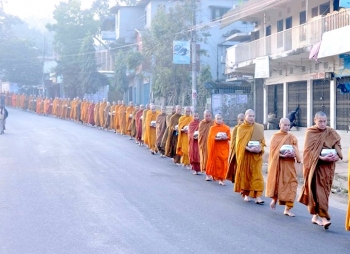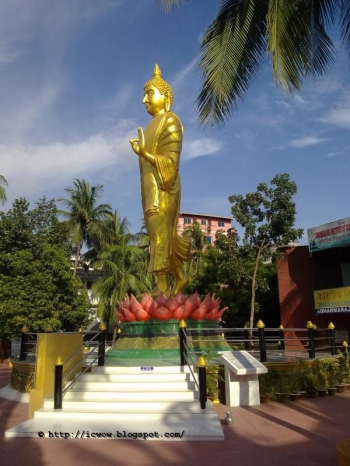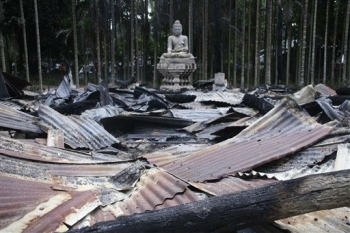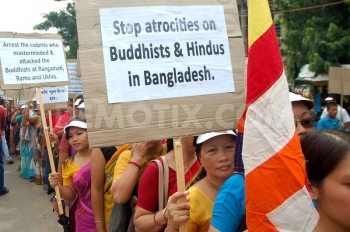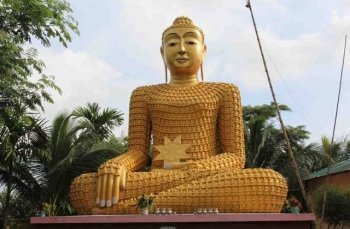Editor’s note: Jnan Nanda completed his BA Hons from the University of Peradeniya, Sri Lanka and his MA from the University of Hong Kong where he presently teaches Reading in Buddhist Sanskrit Texts as a tutor at the Centre of Buddhist Studies. He also works for Buddhistdoor International. He starts his PhD in July 2014 at The University of Hong Kong.
This three-part article aims to provide an introductory account of contemporary Buddhism in Bangladesh. In drawing from limited resources on the subject, online newspaper articles and research papers by scholars from Bangladesh and Calcutta, the writer hopes to explain further the existence of vibrant and traditional Buddhist communities inside Bangladesh. Although Buddhists represent a small percentage of the overall population, Buddhism is indeed deeply rooted in the history and daily lives of the people. Increasingly, with world media coverage looking into current news events in the country, this article endeavours to give some background understanding of the delicate balance in social harmony.
Part One: Buddhists in Bangladesh
Part One discusses some early features of Buddhism in Bangladesh, demographic features of the Buddhist population, and relations with Muslim neighbours.
Jambudipa is a historical name dating back to the Buddha’s time, indicating a geographical area that extended far beyond what is present day India. What we know today as Bangladesh, Nepal and Pakistan, which were originally parts of ancient India, are all important areas of study in Buddhist history. There is extensive ancient Buddhist historical evidence in these countries. In Nepal, foreign and local archeologists, historians and Buddhist scholars have been able to conduct a good deal of research and archeological excavations. In Bangladesh and Pakistan, many areas of Buddhist historical significance remain closed to the outside world due to the countries’ internal problems. Fortunately, recently in Bangladesh, some excavations of ancient Buddhist sites have been permitted and a Buddhist monastery, attributed to Atisha Dipankara (1) in Bikrampur, is noteworthy.
Some claim that Buddhism in Bangladesh dates back to the Buddha’s time (2), or at the least, it is acknowledged that the area known as Bengal in a later period was a stronghold of Buddhism (3). Furthermore, the name ‘Chittagong’ (the principle business port of the country today) is said to be a phonetically corrupt form of Chattyagram, meaning ‘the village of Chetiya-s’ (Buddhist shrines), made during the colonial period. The archeological and historical evidence demonstrates Buddhism played vital roles in the daily lives of ancient people. Unfortunately, the history of Buddhism in Bangladesh is not well known. In fact, there is sadly a lack of adequate research on the subject.
At present, the Buddhist population in Bangladesh is less than 1% of the total 155 million people in the country. Even so, with this percentage, Buddhism is the third largest religion in the country (4), and its approximately 1 million followers uphold the Therav?da tradition. The Buddhist Sangha in Bangladesh is divided into four sub-sects (or Nikaya-s), namely, the Sangharaja Nikaya, the Mahasthavira Nikaya, the Sudharma Nikaya and Doara Nikaya (5). Dilip Kumar Barua writes that Bangladeshi Buddhism enjoyed unprecedented patronage from the ruling dynasty between the 7th and 12th century. Unfortunately, it is believed that the influence of tantric Buddhist (Tantrayana) practices exacerbated the growing anti-Buddhist sentiment of the later ruling dynasties. A combination of internal decay and Islamic invasions reduced Buddhism to one of the minority religions in the country (6). Nevertheless, Therav?da Buddhism survived. A recent study shows, at present, there are in fact 1,290 Buddhist monasteries in Bangladesh (7).
